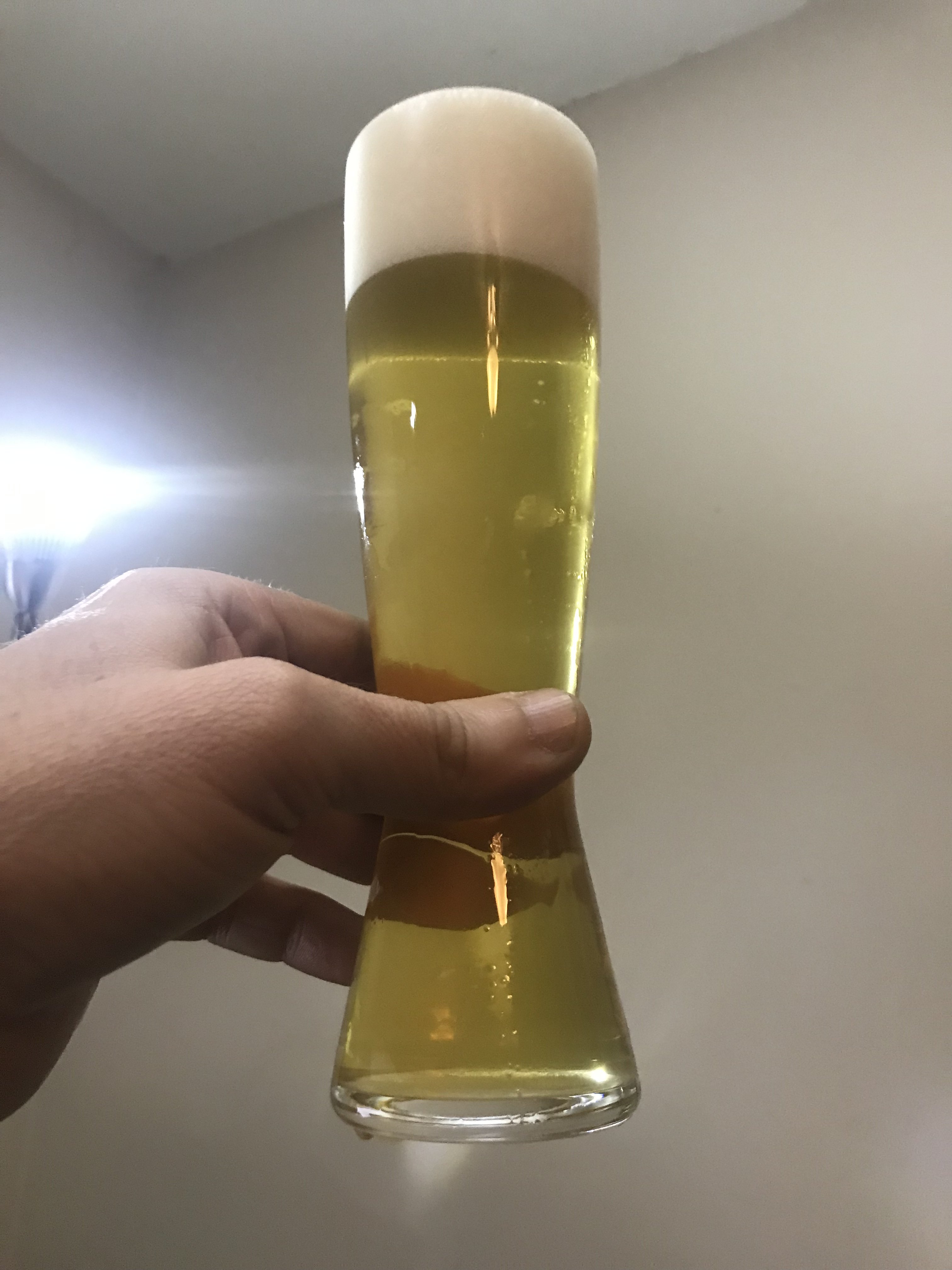Two months later, the re-brew is in the keg and I just pulled a carb check on it. My plan to torment the yeast has worked. I've nailed it. It's exactly what I was gunning for.
Here's how I did it. Although I was tempted to re-brew immediately, I decided to allow the two pint-sized ball jars that I pulled off the cake to die in the fridge for two months. I wanted them stressed. On brew day, I added yeast nutrient, but I skipped the oxygen. I pitched both decanted pint jars at 58F, then induced a 48hr lag by keeping the fermenter at 62F. On day three, I allowed the fermenter to come up to 65F and within eight hours it rocketed to life. Again, it was a very vigorous fermentation once it came up to temp and it blasted through the first 5/6ths of the gravity in the following 72hrs. I abused the yeast and it showed during the final push to TG. I gradually raised the temp to 74F and it wasn't until day 10 that it approached final gravity. It eventually brought home a very impressive 81% attenuation, but it needed some time to get there.
Writing on day 16, with three days in the keg, acetaldehyde is noticeable, but it's waaay in the background. I might not have picked it up if I wasn't looking for it. Sulphur is non-existent. I will allow this strain a full two weeks in the fermenter during future brews. This batch, with the abused yeast, is far softer and rounder and those wonderful banana and bubblegum esters are smearing the grist and hops into a homogenous whole. I really like this beer.
More importantly, I now think I know how to to make the sort of hefe that I like in a controlled, repeatable fashion. Subsequent re-brews will be necessary to confirm that hunch, but I'm pretty sure I've cracked the code for the kind of terrible hefe that I like.
It only took me 30 years and a genetically modified yeast strain that is the result of billions of dollars invested into a field of science that was in its infancy when I started brewing. Put that way, I think it's quite clear that I suck as a brewer!






















![Craft A Brew - Safale BE-256 Yeast - Fermentis - Belgian Ale Dry Yeast - For Belgian & Strong Ales - Ingredients for Home Brewing - Beer Making Supplies - [3 Pack]](https://m.media-amazon.com/images/I/51bcKEwQmWL._SL500_.jpg)





































